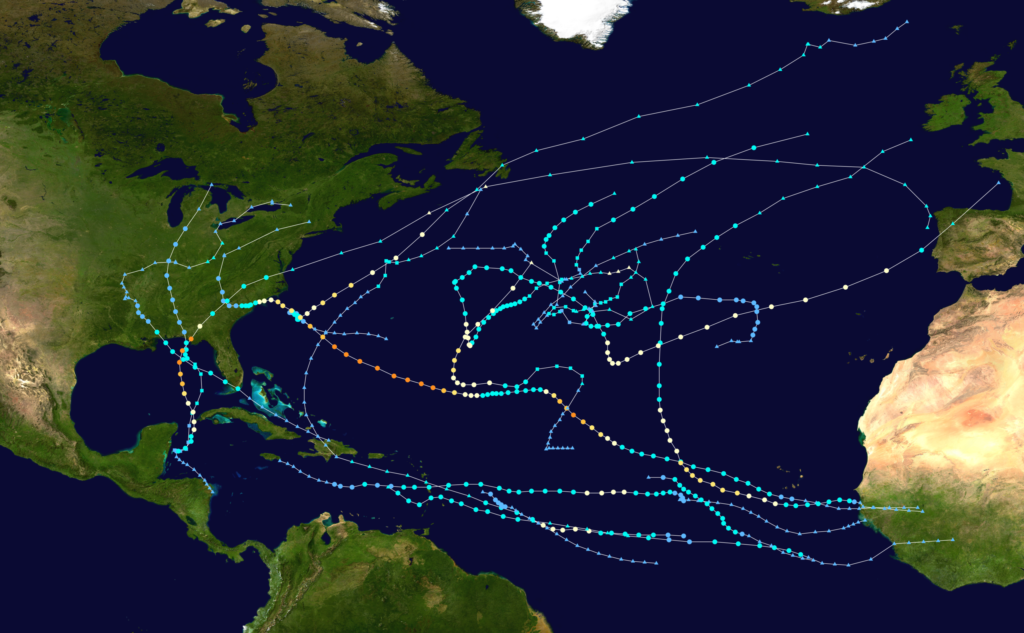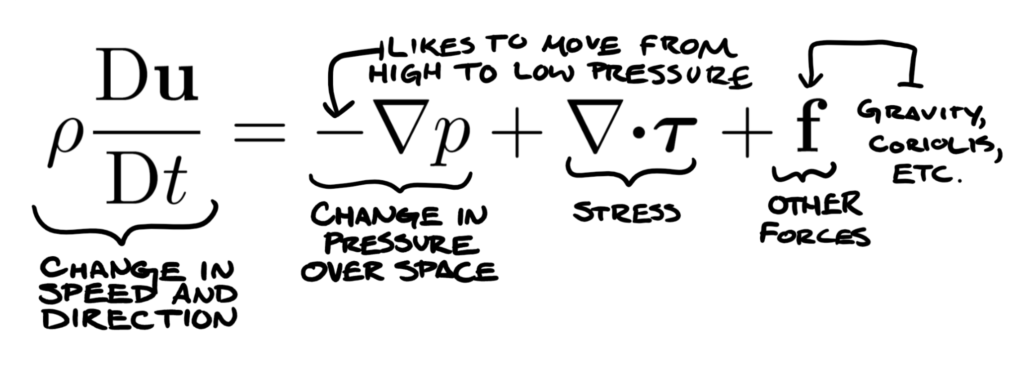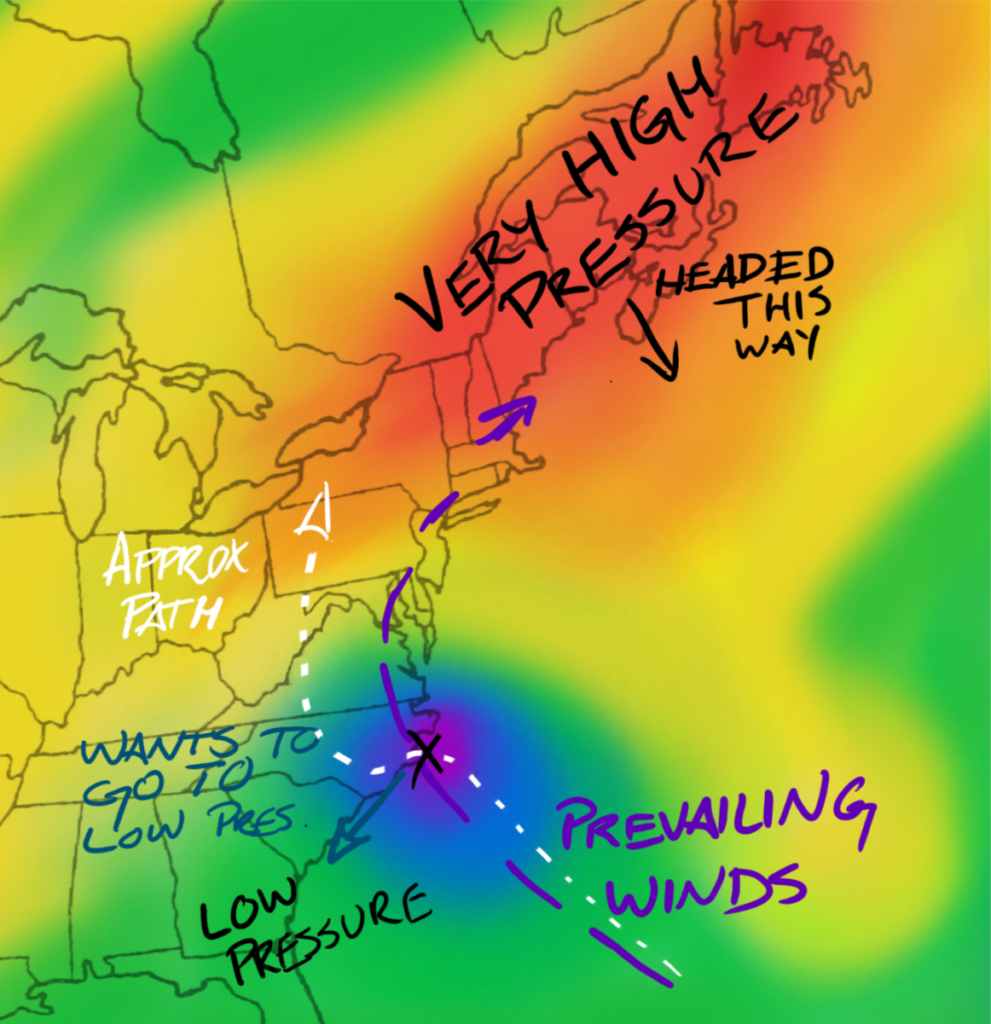Hurricanes are well-known for how unpredictable their paths can be. As wild as they can get, we can usually count on two things for storms that live primarily in the ocean in the Northern hemisphere: their general hook shape, and sharp bends.

As has been frequently reported in the news, Florence took a particularly strange turn when it headed southwest. To see how that came about, we can look at the Cauchy momentum equation, one of the Navier Stokes equations that are central to fluid dynamics:

The equation itself can take on several forms, depending on the usefulness for the particular application. For our purposes, however, the above is sufficient since we have the relevant terms. In determining the path for Florence, two out of three of the terms on the right side of the equal sign are important.
The first is the Coriolis force, usually lumped in with other forces. This is the force most famous for causing the spiral pattern of the storms, but, at the largest scale, is also why we have the trade winds and westerlies. This gives us the hook.
The second term is the change in pressure over space. The negative sign simply means that air and liquid prefer to move from areas of high pressure to areas of low pressure. If the pressure is high enough, as it was over New England and the Maritimes during Florence’s landfall, the path can acquire a sharp bend.
Put these two competing terms together, and we get Florence’s odd path.

Peer edited by Gabby Budziewski.
Follow us on social media and never miss an article: